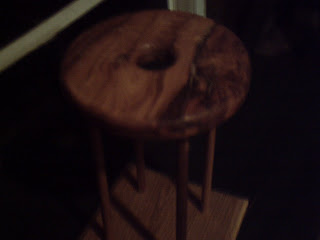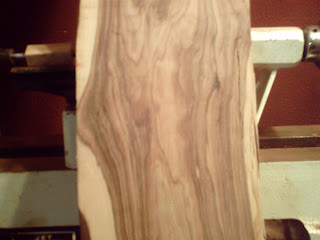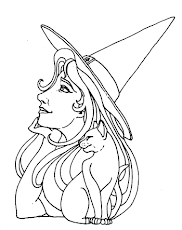






Several years ago, while living in Florida, I had a lucky find ..... 2 boards, 1 approximately 36" in length & 1 approximately 24" in length, of Curly Australian Cypress. Not a variety of tree, but rather a specialized cut which can be gotten from many tree varieties, 'curly' in this case refers to wood grain that comes from an area of the tree near a large branch, where the wood grain doesn't grow straight, as it does in the larger area of the trunk or branches. In these areas, because the wood is growing in more than one direction - i.e. both the trunk & 'branching out' towards the branch, the grain becomes more .... mixed up, confused ... in other words, 'curly'. This is not the same as such woods as 'Curly Maple' where the grain always grows in this manner.
Boards like these are usually at premium prices, simply because they aren't available all the time - you can only cut them when the tree has that grain pattern rather than its normal grain pattern. The 3rd, 4th & 7th picture are of the longer board. The 5th & 6th picture are of the shorter board.
Anyhow, I've saved these pieces for the perfect project ... and, finally, the longer piece is being used to craft a yarn swift with 36" long cross-arms which will be mounted on a lazy-susan base. Once combined with the yarn winder I want for Yule this year, this will allow me to both turn skeins into balls and to turn balls of naked (i.e. undyed) yarn back into skeins after they are dyed.
Sounds pretty silly, yes? Turning commercially balled yarn back into skeins .... but, see, I'm learning how to dye my own yarn - and you can't dye it while it is in a ball. Just can't 'cause the dye can't penetrate all those layers of yarn. So you have to un-ball it, turn it back into long, loose, lovely skeins that will allow you to access the yarn to color it.
*Then* of course, you must turn all that lovely dyed yarn back into balls! So back on the swift it will go, and the ball winder will turn it back into balls for me. Well, once I own one ... that's something I will purchase, rather than attempt to make it myself.
The first two pictures are of the Kumihimo stand my husband & I crafted from a piece of the Curly Aus. Cypress. I chose the area that had the largest flaw in it - partly because it added so much character to the top, and partly because the flaw made that piece functionally unusable for about any other project you can name. But doesn't it look wonderful in this piece?
The first picture shows the top much better, but you can't see the bottom, which is made of a square of red oak. The second picture of the stand is very dark - sorry about that.


No comments:
Post a Comment